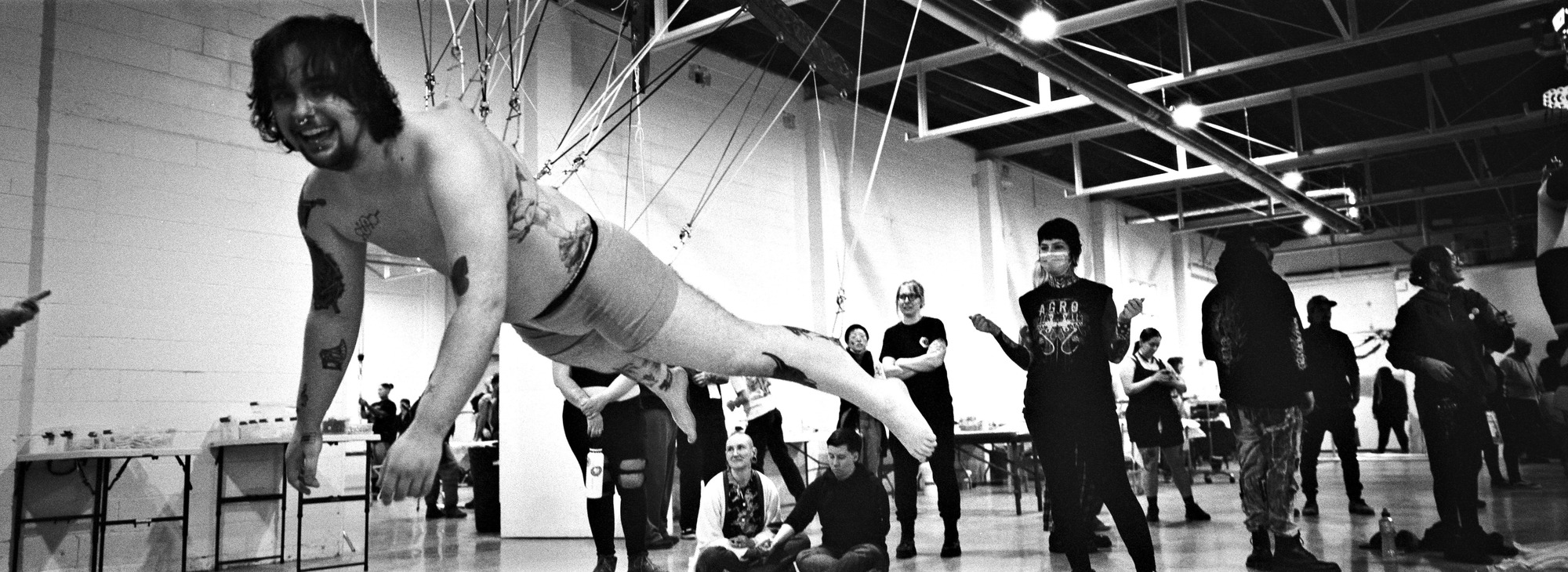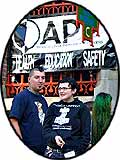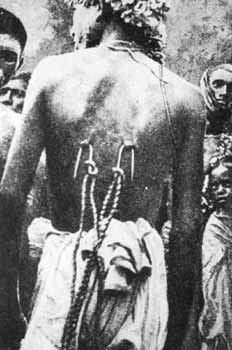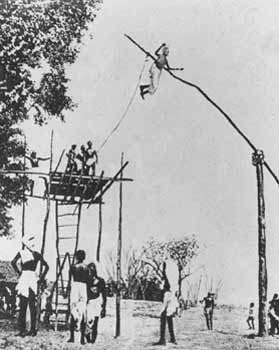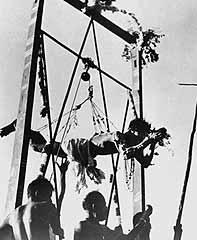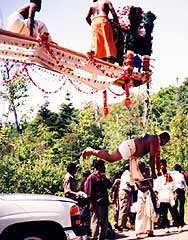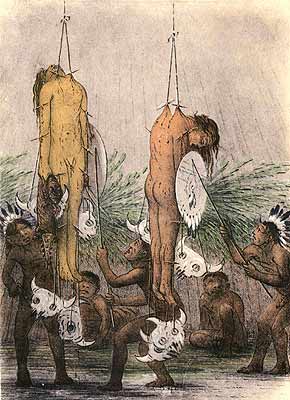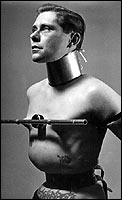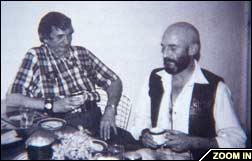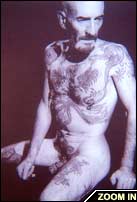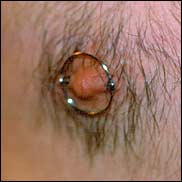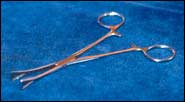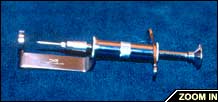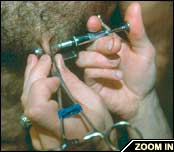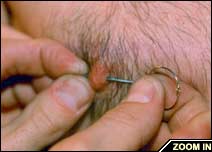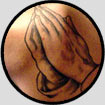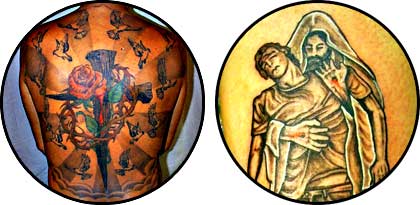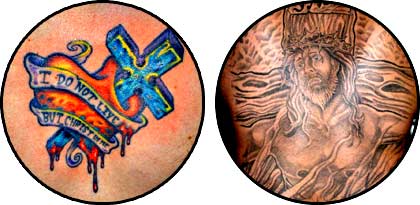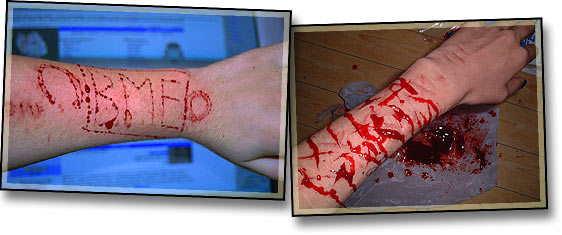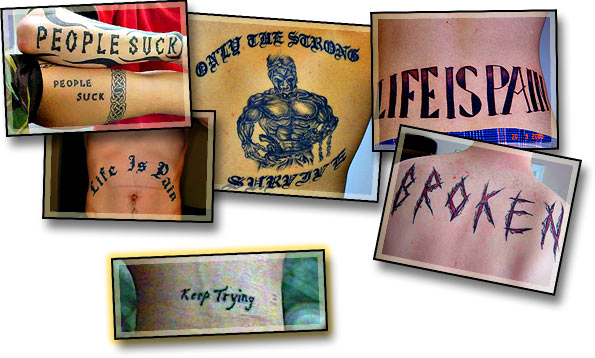 2003 APP EuroCon Report
Going to my first APP convention, their recent EuroCon in Amsterdam, I didn’t really know what to expect. It’s been many years since I had any real dealings with the APP — fights over my support for scalpel piercing, dermal punches, and so on led me to believe that they were an overly conservative bunch of elitist piercers that weren’t particularly concerned with my “progressive” vision of the future of piercing. A few friends that “defected”, coupled with the APP’s continuing difficulty in drumming up much support from this community had me writing them off as not just useless but dead.    And then I went to EuroCon. After attending almost every single seminar, and getting to talk to the board members and piercers, my mind was most definitely changed. I now see the APP as an essential and positive group that I hope all piercers will support and take part in — we need the APP! Having seen what they’re trying to do, I believe that the APP has the potential to be the backbone of the industry, serving to educate piercers, unite piercers, and present a strong front in dealing with the government and the mainstream public. The convention also illustrated the need for groups like the APP in keeping piercers informed and up to date on the overwhelming range of professional issues that can be very hard to keep up on in the absence of reputable trade journals and other organizations.
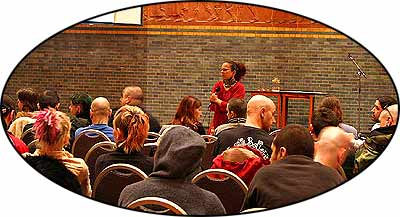 DAY ONE Rachel and I took an overnight flight, arriving the morning the convention started. We stopped at our hotel for a nap and got to the convention space at about noon where we were greeted by Bethra Szumski, the current APP president, as well as other familiar faces such as Alicia Cardenas of Twisted Sol in Denver, and Megg Mass of Infinite in Philadelphia. We’d missed the first class or two (bedside manner I think), but after lunch an anatomy course was scheduled. The anatomy class was being taught by Betsy Reynolds, an oral biologist who acts as somewhat of an advocate for the piercing community, counter-balancing some of the ludicrous statements made by anti-piercing dentists and so on. While the information she was presenting on healing was concise and relevant, I was a little surprised that it was being taught here at all — from my point of view it was disturbing that anyone wouldn’t know this anatomy in their sleep. The presentation was running slowly, in part because of constant interjections about piercing procedure. Eventually Paul King had to step in and ask that people save their procedure questions — this was an anatomy lecture and not intended as a technique debate. At the end of the first day I was still pretty convinced that it was going to be a waste of time. The anatomy course had been boring, basic, conservative, and Aimee (see sidebar) was doing her damndest to make the attendees look bad — or at least have a bad time. At the end of the day Rachel and I walked around town a little, stopped for a rather bland meal somewhere, went back to the hotel and went to bed.
DAY TWO Seminars in theory started at 9:30, so a little after 9 AM I arrived and was told the seminar — basic piercing technique — was pushed back until ten. Technical problems seemed to plague the event, and it wasn’t until 11:30 that things actually got started, with the technique seminar being bumped to the afternoon. I think the only good news, echoed by the people sitting around me, was that Aimee had decided to “skip class” that day, so at least we didn’t have to put up with her disruptions. Alicia then took over what was left of the morning with her stretching seminar. Given how basic the anatomy course had been, and because I’ve got more than a decade of stretching experience, I expected to be bored stiff — but I was very much mistaken! She started with diagrams showing exactly how stretching occurs on an anatomical level, detailing micro-tears and collagen replacement.
|
Also covered were stretching techniques, jewelry, and even lots of little tidbits for business owners like “stretching cards” (cards for your customers that encourage them to come back for slow and healthy stretching with incentives like 10% off on the next stretch if they wait). I do think Alicia has a little bit of an unfair bias against plastics, but she’s an engaging speaker that does a great job of covering basic material while throwing in enough trivia and advanced information to keep any level of audience enthralled.
After lunch, Bethra gave an in-depth and highly technical jewelry and metallurgy seminar. I was pretty tired at that point (still on Canadian time), and diagram after diagram of atomic structures was putting me to sleep. Since Bethra had prepared a hand-out with all the information, I took off for a nap. On my return she was just finishing up and Megg was about to start the basic techniques seminar, the technical problems having finally been solved.
 HANDOUT EXCERPT |
Megg’s also a great speaker and an experienced and progressive piercer who’s very good at presenting material that’s old hat to most people but with enough tips in it that I think even a piercing veteran would get a lot of out it, fine-tuning their techniques. Her seminar, prepared with Elayne Angel, contained numerous ideas that would improve any piercer’s work. Much of her seminar also focused on the subtle aspects of organizing a studio and its support staff to best facilitate and safe and pleasant piercing process.
 AT THE APP PARTY |
 AT THE APP PARTY |
|
 AT THE APP PARTY |
 COLD STEEL REPRESENTZ |
|
 BRUNO AND BRENNO |
 FRANCE REPRESENTZ |
|
 SO MANY RAFFLE TICKETS |
 AT THE APP PARTY |
DAY THREE
I showed up at 10 AM to again find that things had been pushed back even further — not so much for technical difficulties, but because people were simply late arriving. Maybe I’m a nerd, but if I had spent a few thousand dollars flying to a convention I’d go to the effort of showing up on time for the classes. I was surprised to hear that it’s not unusual at the Las Vegas convention for as many as half the people to not even bother showing up at all!
Meh.
The first seminar was one I’d wanted to take for a long time, the Bloodborne Pathogens course prepared by David Vidra and Health Educators, being taught by Alicia. This is one of those basic seminars that every piercer should know backwards and forwards, and like CPR certification, it’s the kind of thing they should be doing regularly to stay sharp. When it involves people’s lives — being able to provide a safe and aseptic foundation for your studio is the basis of this seminar — you don’t want to get sloppy!
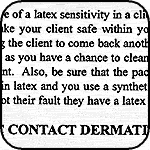  |
The presentation that followed was the one that really freaked me out and was probably the most eye-opening one of the event. Julien Ball of Prestige Medical, one of the leading autoclave manufacturers, gave an overview of modern sterilization technologies. It was fascinating to learn about the different procedures in Europe (for example, they use aggressive monitoring and charting of their clave’s performance, while spore tests are almost unheard of), but what really got to me was an overview of the difference between vacuum autoclaves and “normal” autoclaves.
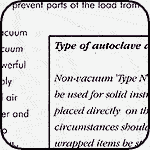   |
For those that don’t know, an autoclave sterilizes when the pressurized steam hits the surface of the items in the clave. If the steam doesn’t reach the items due to some blockage, sterilization doesn’t happen. Where it gets scary is that a simple pocket of air can, in some cases, provide this blockage. What that means is that a normal autoclave as is used by virtually 100% of North American studios can not guarantee sterilization of anything hollow (receiving tubes, tattoo tubes) or anything that has been placed in bags (basically all tools and jewelry) — there were definitely quite a few faces in that crowd turning white as Julien talked (see the handouts I’ve provided here for more information on this).
It was hard to get an answer out of Julien as to exactly what the risk level was — did these air pockets form every cycle, or one in ten thousand times? After all, Prestige Medical has a vested interest in the subject since there’s a higher profit margin in a $7000 vacuum clave than a $900 field-medic special! I was surprised to find out that about 70% of the piercers at the convention (the majority of the Europeans there) were using triple-pulse vacuum claves as well as single use water systems — some of the gear in the European studios was amazing. One German piercer even had an $8000 automated “tool dishwasher” in his shop!
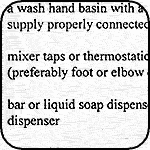 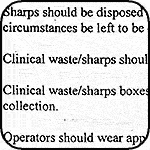  |
Al Prescott, organizer of the Derby conventions and developer of the Safe Working in the Tattoo and Piercing Industry vocational course, followed with an exhaustive seminar on risk management procedures which also touched on the extremely high standards that European (and specifically UK) studios are held to. I don’t think American or Canadian studios could match these without at least doubling prices — which might be a good thing since it could eliminate the low-end studios (although it could do the opposite since low-end studios tend to be more profitable and therefore more able to invest in new hardware).
The third day’s seminars ended with CPR certification which I skipped, but the day itself was to be capped with a party of everyone at the convention to give away some very generous prizes from the exhibitors — probably six thousand dollars worth of stuff was given away in the draws. Rachel won a belt buckle and some ring openers! I on the other hand won nothing…
 |
 |
 |
 |
 |
 |
DAY FOUR
The final day started with an aftercare presentation by Alicia, covering the pros and cons of a wide range of products in use by this industry. Unfortunately Aimee showed up about half way through it, shouting out a bunch of irrelevant questions which had already been discussed before she got there. I just don’t understand why someone would come all that way and act like such an ass… It was funny though — I think she must have clued in that she was pissing people off because when anyone would ask where she worked she was extremely evasive, just saying things like “a place on the east coast”.
Paul King’s informative and entertaining “amateur piercing anthropology and history” seminar followed. Paul is definitely a guy who I’d call a “piercing nerd” — someone who can go on and on about it and is interested in every little silly piece of trivia on the subject. Given that’s how I’d also describe myself, and given that it’s so hard for any one person to get a real picture of this community (so much of it is still oral history), it was wonderful to be able to assimilate his stories — many of which have been making their way into the new BME encyclopedia project (which will be officially unveiled on January 1st, 2004).
His stories about the rituals he watched during his travels in Penang were especially touching. We’ve all seen the gory photos of hundreds of thousands of people marching through the streets with giant cheek skewers — they seem so different from us — so enlightened. We are given the impression that they do these things naturally, and that everyone is in touch with God. That’s not entirely true though. Just like here in the West the occasional person will have to abort their suspension because they’re not ready to accept it, or it’s just not the right day, the same happens in Penang. I think the most moving photo I saw the whole time I was in Amsterdam was a young man sitting, emotionally exhausted, not able to take part in the ritual — and in his face I saw the same face I’ve seen in my backyard whenever someone asks to be pulled down from a suspension early because they can’t handle it.
It was at that moment, Paul said, that he realized that all of us in this world are the same.
Megg gave the final seminar, on legislation. I wasn’t sure how this was going to go over because some of the European piercers were already annoyed at the American bias on some of the subjects. However, the seminar didn’t talk specifics — its goal was to help teach people in down to earth terms how to deal with politicians. Given that Megg has helped Philadelphia come up with some of the best piercing legislation in the world, she’s more than qualified to teach this. Her anecdotes of her own successes in this area should be effective strategy for anyone around the world facing the same issues.
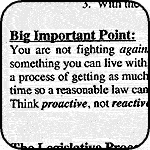 HANDOUT EXCERPT |
The day finished on a bit of a sad note though, as Bethra thanked everyone for coming, and let them know that, for financial reasons, this would probably be the last time the APP would host a European convention. However, the day before the convention started they’d hosted a mini-event introducing all of the heads of the fledgling European professional piercing organizations — some had only two or three members, but I think they walked away empowered, and thanks to seminars like Megg’s legislation one, with new plans of attack as well.
I think everyone there was looking forward to the day when we’re able to have a world piercing convention, hosted by dozens of professional groups from all over the world.
 MEXICO REPRESENTZ |
 BRUNO, CHRISTIANE, AND TEN YEARS OF PAIN |
 ALEX AND FOXX |
 MEGG MASS AND PAUL KING |
|
THE CONVENTION FLOOR
A small but nice cross-section of jewelry suppliers from around the world had booths at the event. Most of it was the same stuff that you’d see at every single tattoo convention — in all honesty I think they could have done without the floor. That said, I’d like to mention Quetzalli, an organic manufacturer from Mexico that had truly gorgeous examples of ammonite-inlaid ear jewelry as well as plugs filled with intricate and beautiful beadwork.
 |
 |
 |
 |
 |
 |
CONCLUSION
I met a lot of really wonderful people — a lot of old friends, online friends, and many new ones as well. Bruno and Brenno from Italy were wonderful — talented piercers and body artists full of enthusiasm in their fledging association. Christiane from Norway showed me Håvve’s new book, Ten Years of Pain, about the history of the Pain Solution performance art group (the book is wonderful and I hope to have it in BMEshop soon). Russ Foxx from Canada was great fun to see, as was Carlos Escobar of Spain. It was also nice meeting piercers like Alex from the UK who I knew from the good things their many clients I deal with all the time said about them.
I know I’m forgetting people! I apologize!
I also met with Andrea (Lacrima Rubra) from Germany who showed me video of years of her performances and introduced me to some new friends and other friends who — like so many of my acquaintances — I know only by their genital mods! I also got to see my old friend Patrick Bartholomew again which is always nice, and Kor (Ego Kornus) really impressed me as well. It was very interesting to talk to a performer who comes from an art (modern ballet) and ritual background more so than a body modification background. And the forty or so beers we drank that afternoon between us polished off that day very nicely!
I could name people endlessly and still forget some who made the event worthwhile for me, so I’ll get back to EuroCon itself. I had three main problems with the APP convention that I think to be fair I should mention. First, I thought parts of it were disorganized and unprofessional, resulting in things like handouts not being ready on time and projection systems not working — given the expense that had been gone to in hosting, and the fact that the attendees had spent a lot of money to come I thought this was unfortunate. That said, as someone who’s hosted events, I know this is pretty normal.
Second, I thought better fact checking could have been done. While the presentations given by specialists were very strong, some of the more general reports were riddled with historical errors, typos, and substitutions (naming the wrong soap as vegan and so on). They were just little things, but I felt that it’s that final touch that really makes a presentation perfect.
Finally, an exceptionally poor job was done in marketing and promoting the convention. Most of the European piercers I talked to had absolutely no idea there was an APP event in Amsterdam, and those that did assumed it was for Americans only and not oriented to Europeans. A lot of the value of the convention came from dialog with the attendees, not just the lecture sessions, so this mistake was their most serious.
Let me be very clear though — those complaints are listed in order to be thorough and honest. I do not believe that they tainted the conference to the point where it wasn’t worthwhile. While the majority of the information being presented was old hat to me, there were still volumes of knowledge being shoveled that was new and that I needed to hear — and that every piercer needs to hear.
The next APP convention — a much larger one that draws over a thousand piercers (some of the best in the world) — is at the start of May, 2004 in Las Vegas. Now, it happens to coincide with Shawn Porter’s wedding, so I’m going to have to miss a day, but assuming that America doesn’t stop me at the border, I’ll be there, eager to keep learning. I hope you’ll be there too.
See you in Vegas,

Shannon Larratt
BMEzine.com
PS. Thank you to the APP for inviting me to come and being generous enough to extend my press passes into the seminars. Thank you as well to Bethra, Megg, Paul, and the other APP members for making me feel welcome. Finally, thank you to them as well as Julien, Al, Betsy, and the other speakers for sharing their knowledge.

